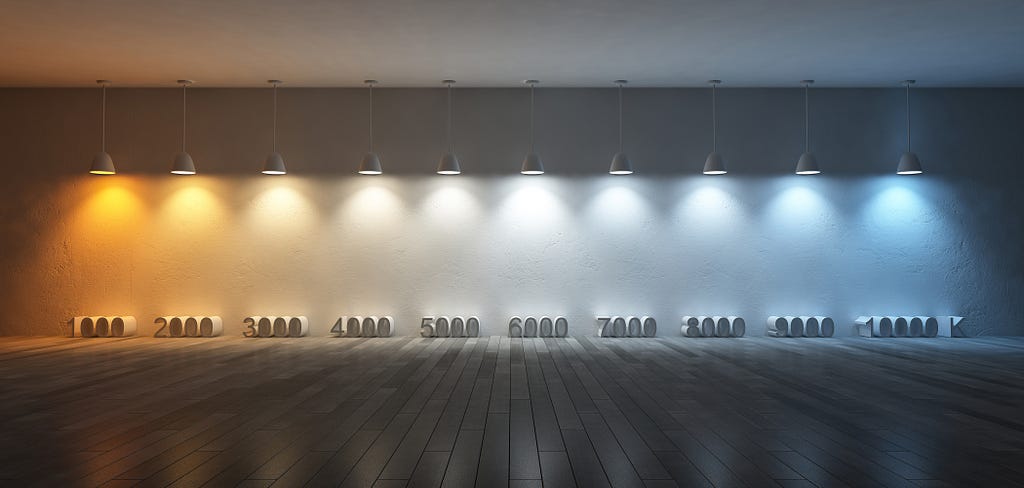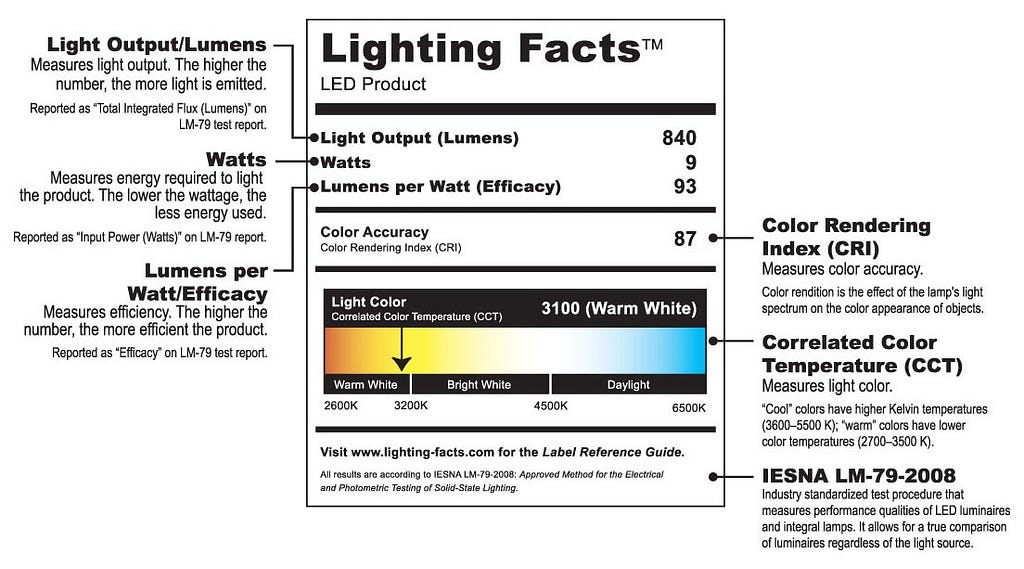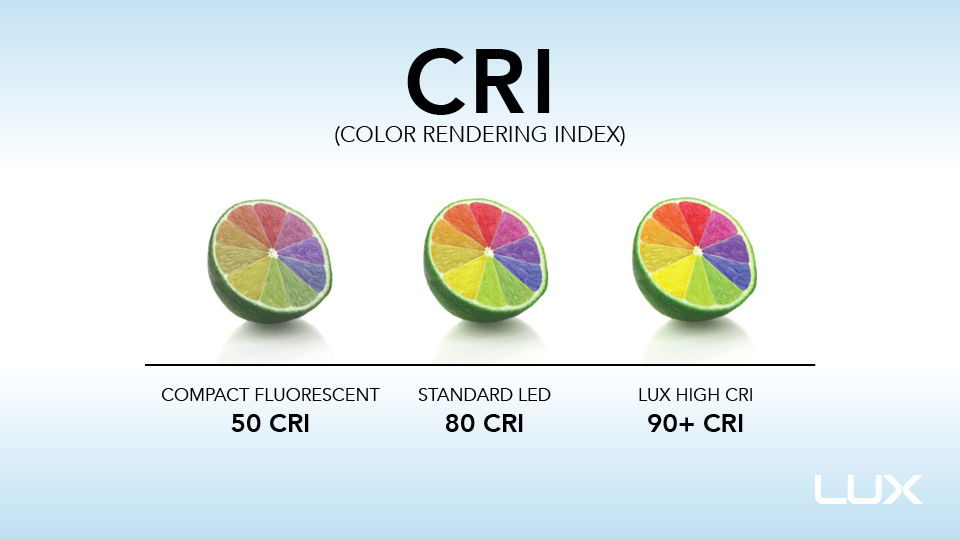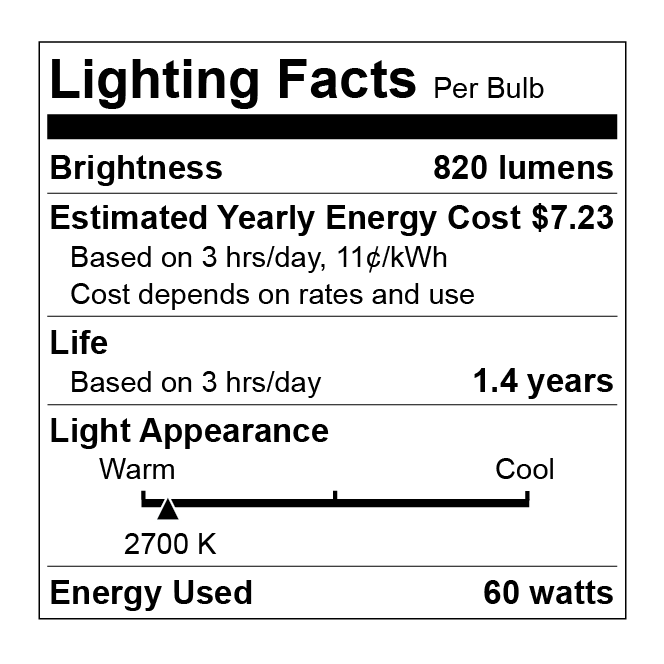Latest news about Bitcoin and all cryptocurrencies. Your daily crypto news habit.

Shopping for lighting used to be pretty easy. For most bulbs, you only needed to know the physical shape and the wattage. For something more exotic, you could bring your old bulb to the store and match it with something on the shelf.
It’s very easy to purchase the wrong bulb — and end up dissatisfied.
Today, light bulb shopping is a convoluted mess. The wattage is no longer tied to how bright the bulb is. There are a bunch of new terms, like Kelvin, CRI, and lumens. It’s very easy to purchase the wrong bulb — and end up dissatisfied.
But it doesn’t have to be difficult. I’m going to explain the three specs you need to know in plain English. I call these the Lighting Trinity. And I’ll show you how to find this information on light bulb packaging.
1. Correlated Color Temperature
Put simply, correlated color temperature (CCT) is the color of white light.
Forget descriptions like “soft white” and “daylight.” Those are misleading. Instead, you’ll want to know the actual value associated with CCT.
A classic 60 watt incandescent bulb is about 2700 K at full brightness.
CCT is expressed in degrees Kelvin, often shortened to K. You’ll typically see numbers like 2700 K and 5000 K written on lighting packaging. The lower the number, the “warmer” the color. 2700 K might be described as warm white and 5000 K may be considered cool white.
 An illustration of CCT values in degrees Kelvin. Most indoor lighting products produce light in the range of 1800 K to 6500 K.
An illustration of CCT values in degrees Kelvin. Most indoor lighting products produce light in the range of 1800 K to 6500 K.
A classic 60 watt incandescent bulb is about 2700 K at full brightness. A halogen lamp is about 3000 K. When dimmed, both may fall to 2000 K, or even lower. This is the type of lighting typically found in a home.
Fluorescent lamps are trickier. They can come in a variety of color temperatures. Commonly, you’ll find 3500 K, 4100 K, and 5000 K, but lower and higher values are also available. Office lighting is typically around 4100 K.
The Lighting Facts label, found on most consumer lighting products, will help you find the right CCT. The number will be under “Light Appearance” or “Light Color”. Some brands, like IKEA, publish CCT and other information on the packaging but do not use the Lighting Facts label.
2. Lumens
Lumens are effectively the brightness of a white light source.
You’ll see a lot of bulbs advertised with terms like “60 W Equivalent.” Oftentimes, these statements are downright false. Instead, pay attention to lumens, which you’ll also find listed on the Lighting Facts label.
 An example Lighting Facts label with CRI and a full color scale, but without life and energy cost estimates.
An example Lighting Facts label with CRI and a full color scale, but without life and energy cost estimates.
As an example, there are a number of “60 W Equivalent” bulbs that actually have lumens closer to a 40 watt bulb. Talk about disappointment.
When replacing incandescent bulbs, use these lumen values to find an LED equivalent:
- 40 watt: ~400 lumens
- 60 watt: ~800 lumens
- 75 watt: ~1100 lumens
- 100 watt: ~1600 lumens
- 150 watt: ~2200 lumens
So, when you are looking for a 60 watt replacement, look for something with a brightness of about 800 lumens.
3. Color Rendering Index
Color rendering index (CRI) is a measure of how “real” or accurate colors look under a white light source.
CRI values range from 0 to 100. For most applications, the higher the CRI, the better.
Consider the appearance of people and objects under daylight. They tend to look great, right? Well, the CRI of daylight is around 100. Contrast this to an orange street light, where it’s hard to discern the color of anything. That street light has a CRI close to 0.
Classic incandescent light bulbs have a very high CRI of about 100. Most LEDs sold today are around 80 CRI, but the state of California requires vendors to sell bulbs with a CRI of 90 or higher.
 An illustration of CRI. Image: LUX Technology Group.
An illustration of CRI. Image: LUX Technology Group.
The tricky part is that manufacturers do not have to specify CRI on Lighting Facts labels. Sometimes you’ll see it printed somewhere else on the box. For example, IKEA always prints CRI on LED bulb packaging. Products with 90 CRI and higher almost always mention CRI on the packaging.
But often, CRI is nowhere to be found. A good rule of thumb: if CRI is not specified and the bulb is from a name brand like Philips, GE, or CREE, it is probably about 80 CRI. If you don’t recognize the brand and it is low-cost, it may be in the range of 70–80 CRI.
You will probably find an 80 CRI bulb acceptable if it meets your CCT and lumen requirements, but try to get something with a higher CRI, if available.
Wrapping Up Lighting Facts of a 60 watt incandescent bulb. This label, which is more typical, does not include CRI or a full color scale, but does have life and energy cost estimates.
Lighting Facts of a 60 watt incandescent bulb. This label, which is more typical, does not include CRI or a full color scale, but does have life and energy cost estimates.
Now that you have an understanding of the Lighting Trinity, let’s put your knowledge into action.
Say you want something to replace your 60 watt incandescent bulb, which has a CCT of 2700 K and 800 lumens of brightness. Get an LED bulb that is about 2700 K, produces around 800 lumens, and has at least 80 CRI.
You might want something a little brighter or a little cooler. Use your understanding of color and brightness to pick, respectively, a higher lumen value or higher CCT.
If this is too much to process, or you’ve got an unusual light bulb, be sure to head over to SimpleBulb.com. If you contact us, we will personally help you pick the right bulb at no charge.
Thanks for reading. If you found this article interesting, please hit the clap button above and share with your friends. I also encourage you to leave a comment or contact me directly. Check out SimpleBulb.com: the easiest way to find the perfect LED light bulb replacement.
The Lighting Trinity: 3 Specs You Must Know When Purchasing LED Light Bulbs was originally published in Hacker Noon on Medium, where people are continuing the conversation by highlighting and responding to this story.
Disclaimer
The views and opinions expressed in this article are solely those of the authors and do not reflect the views of Bitcoin Insider. Every investment and trading move involves risk - this is especially true for cryptocurrencies given their volatility. We strongly advise our readers to conduct their own research when making a decision.